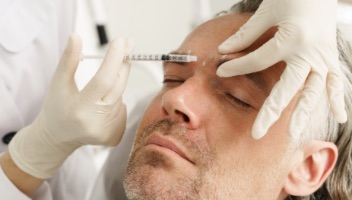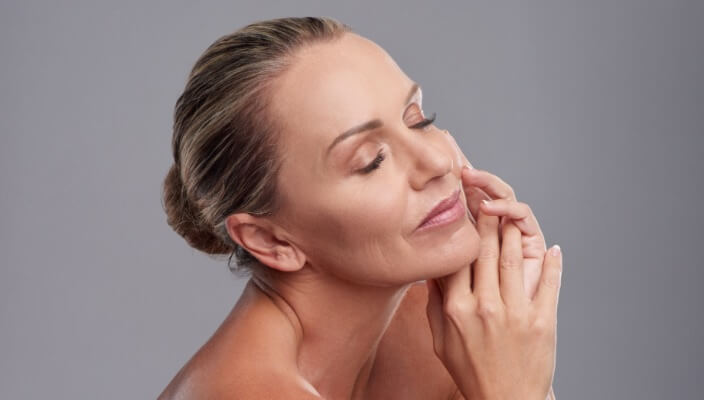Buccal Fat Removal
Buccal Fat Removal BEFORE AND AFTER PHOTOS






Buccal Fat Removal Explained
Benefits of Buccal Fat Removal
- Enhanced Facial Contours: Reduces fullness in the lower cheeks, leading to a slimmer and more defined mid-face.
- Improved Cheekbone Definition: Accentuates cheekbones for a more aesthetically pleasing facial structure.
- Youthful Appearance: Creates a youthful and refreshed look by addressing excess fat in the buccal area.
- Customized Results: The surgery allows for precise sculpting, ensuring personalized and natural-looking outcomes.
- Minimally Invasive: Typically performed on an outpatient basis with a relatively short recovery period.
How New Horizons Can Help
Sculpt Your Jawline with Buccal Fat Removal



Buccal Fat Removal FAQs - in process
Buccal fat removal, also known as cheek reduction surgery, is a cosmetic procedure aimed at reducing the size of the buccal fat pads in the cheeks. These pads are located in the lower part of the cheeks, and their removal can create a more sculpted and defined facial appearance. During the procedure, an incision is typically made inside the mouth, allowing the surgeon to access and remove the desired amount of fat from the buccal fat pads.
Good candidates for buccal fat removal are typically individuals with round or chubby cheeks who desire a more contoured and defined facial appearance. Ideal candidates are in good overall health, have realistic expectations about the outcomes of the procedure, and have sufficient buccal fat volume to warrant removal. It's essential to consult with a board-certified plastic surgeon to determine if buccal fat removal is the right option for yo
While buccal fat removal can create a more sculpted facial appearance, it's crucial to communicate your desired outcome clearly with your surgeon. A skilled New Horizons surgeon can remove the appropriate amount of fat to achieve a natural-looking result without causing hollow or gaunt-looking cheeks. It's essential to choose a qualified and experienced surgeon who understands facial anatomy and can tailor the procedure to your individual needs and goals.
The results of buccal fat removal are typically long-lasting, as the fat cells removed from the buccal fat pads do not regenerate. However, factors such as aging, weight fluctuations, and lifestyle habits can affect the appearance of the cheeks over time. It's essential to maintain a healthy lifestyle and follow your surgeon's recommendations for optimal long-term results.
Watch: Dr. Turowski Discusses the Mid Face Lift With No Visible Scars

Sculpt Your Jawline with Buccal Fat Removal
Talk to New Horizons today!
What to Expect at Your Buccal Fat Removal Appointment
On the day of the surgery, local anesthesia is administered, and a small incision is made on the inside of each cheek to access the buccal fat pads. The excess fat is carefully removed, and the incisions are closed. The procedure is generally well-tolerated with minimal discomfort.
After the surgery, there will be some swelling and mild discomfort, and it's important to follow post-operative care instructions provided by your dermatologist. Most patients can resume normal activities within a week, and follow-up appointments will be scheduled to monitor your recovery and ensure optimal results.
How to Prepare for Buccal Fat Removal
Attend the pre-surgery consultation to discuss any concerns, review the procedure details, and address any questions you may have. Following these guidelines will help ensure a smooth and successful buccal fat removal experience, enhancing your facial contours according to your desired aesthetic goals.
Planning for Recovery after Buccal Fat Removal
While most patients can resume normal activities within a week, strenuous exercise should be avoided for a few weeks. Attend scheduled follow-up appointments to monitor your progress and ensure a smooth healing process. Results become more apparent as swelling diminishes, revealing a more contoured and sculpted facial appearance.
Featured Blogs

- Botox
- Cosmetic Treatments
Understanding the key differences between BOTOX® or fillers can help you make an informed decision on which treatment is right for you.
Read More
- Botox
- Injectables or Fillers
- Cosmetic Treatments
Let's face it, we're all aging. BOTOX® can rejuvenate your face. Learn about the best locations for BOTOX® injections in this blog post.
Read More
- Cosmetic Treatments
- Plastic Surgery
Discover how long the results of a facelift can last and what factors can affect the longevity of your rejuvenated appearance. Find out more here.
Read MoreFeatured Products

EltaMD Moisture Seal
EltaMD® Moisture Seal melts on contact and locks in moisture for up to 24 hours. It spreads easily, forming a protective layer over the skin. This intense occlusive moisturizer helps soothe dry, flaky, intact skin after procedures. This waterless, preservative-free formulation is designed for delicate skin resulting from cosmetic or medical treatments. 2.8 fl oz

Revision Gentle Foaming Cleanser
Revision Gentle Foaming Cleanser is a soap-free cleanser that comforts and moisturizes all skin types. 5 fl oz / 150 mL
